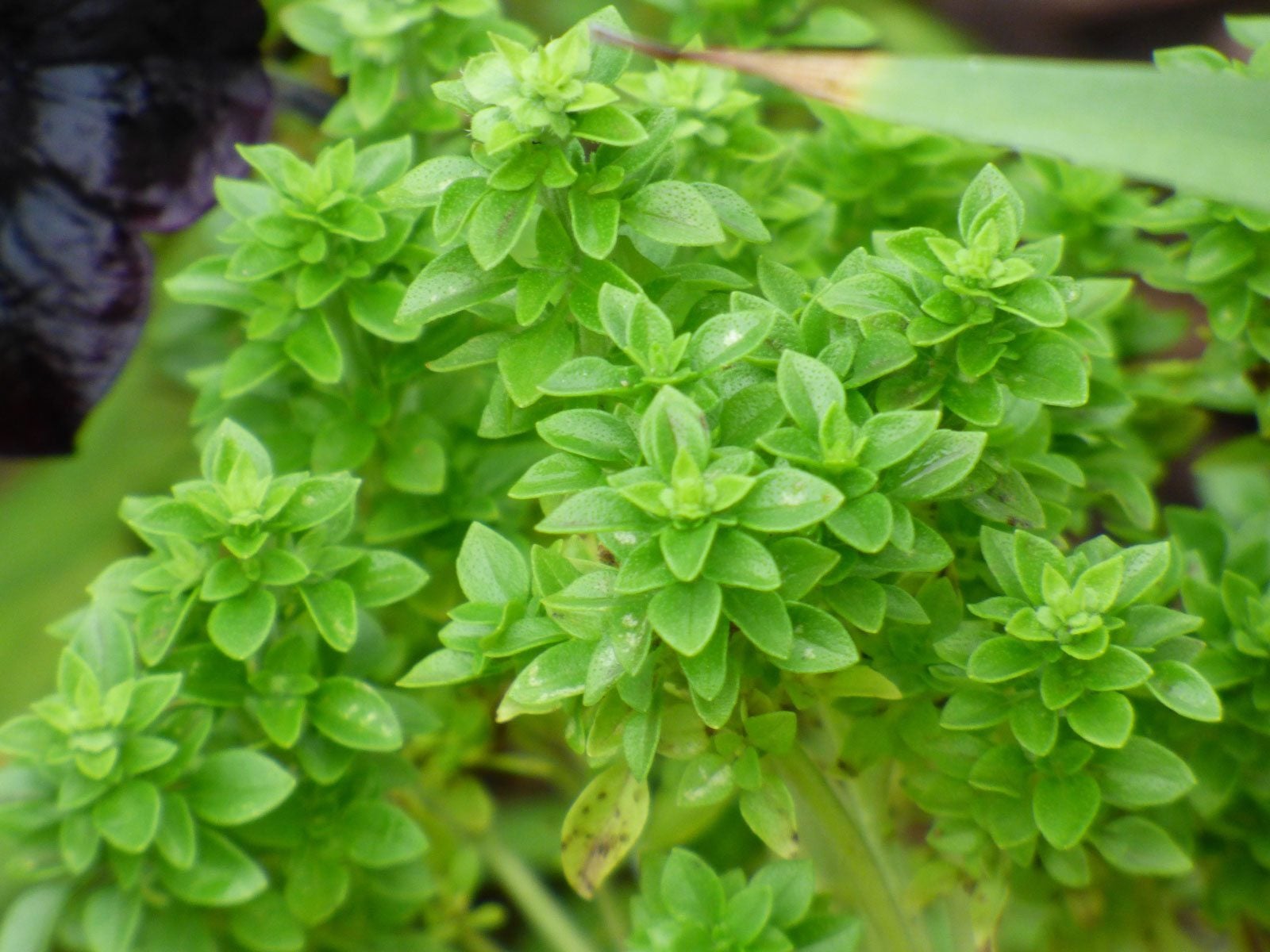What Is Boxwood Basil – How To Grow Boxwood Basil Plants

Basil is many a cook’s favorite herb and I am no exception. With a subtle peppery taste that evolves into a sweetness and lightness accompanied by a delicate menthol aroma, well, it’s no wonder ‘basil’ comes from the Greek word “basileus,” meaning king! There are many different cultivars of basil, but one of my favorites is the Boxwood basil plant. What’s Boxwood basil? Read on to find out how to grow Boxwood basil and all about Boxwood basil care.
What is Boxwood Basil?
As its name suggests, a growing Boxwood basil plant looks much akin to boxwood. Ocimum basilicum ‘Boxwood’ is a highly ornamental basil. This compact, round, bushy basil looks fabulous as a fragrant edging around the garden, in containers, or even trimmed into topiaries. Boxwood basil grows between 8 and 14 inches (20-36 cm.) wide and tall. It is suitable in USDA zones 9 to 11.
How to Grow Boxwood Basil
Like other basil varieties, Boxwood is a tender annual that likes both warm air and soil. Start seeds indoors three to four weeks prior to the last frost in your area in a good quality starting medium. Lightly cover the seeds and keep them moist. Germination will take place in five to ten days at an optimal temperature of around 70 degrees F. (21 C.). Once the seedlings show their first couple of sets of leaves, move the plants to bright light and continue growing Boxwood basil until temperatures have warmed enough to transplant them outside. Wait until nighttime temperatures are at least a consistent 50 degrees F. (10 C.) or over.
Boxwood Basil Care
When temperatures have warmed enough to move the basil outside, select a site with full sun and well-draining soil. Keep the basil damp but not sodden; give it about an inch (2.5 cm.) of water each week depending upon weather conditions. If the Boxwood basil is container grown, it may need to be watered even more frequently. Leaves can be harvested throughout the growing season. Continually pinching the plant back will result in additional leaf production and a bushier plant.
Gardening tips, videos, info and more delivered right to your inbox!
Sign up for the Gardening Know How newsletter today and receive a free copy of our e-book "How to Grow Delicious Tomatoes".

Amy Grant has been gardening for 30 years and writing for 15. A professional chef and caterer, Amy's area of expertise is culinary gardening.
-
 Looking For Plants To Give You The Soft And Fuzzies? Try These 5 Fuzzy Leaf Plant Options
Looking For Plants To Give You The Soft And Fuzzies? Try These 5 Fuzzy Leaf Plant OptionsLovers of texture, drama, silver foliage and tactile plants will adore these special sensory garden additions. These fuzzy leaf plant options will leave you all aglow
By Susan Albert
-
 Get Ready For A Summer Of Hummers! Grow These Full Sun Hummingbird Plants and Flowers
Get Ready For A Summer Of Hummers! Grow These Full Sun Hummingbird Plants and FlowersIf you’re lucky enough to enjoy a sunny backyard, make sure you are maxing out on your pollinator opportunities and grow these full sun hummingbird plants and flowers
By Tonya Barnett